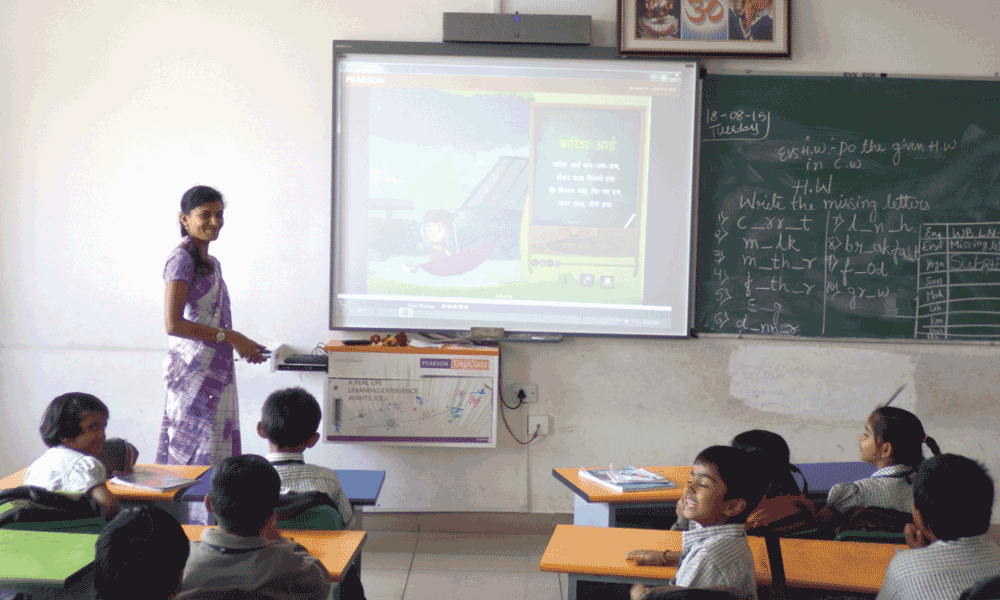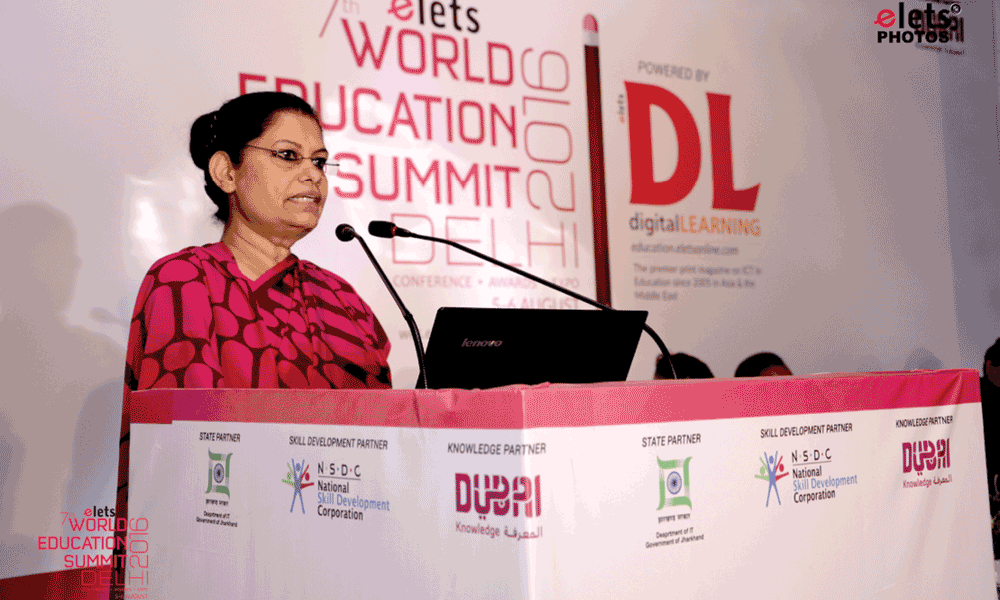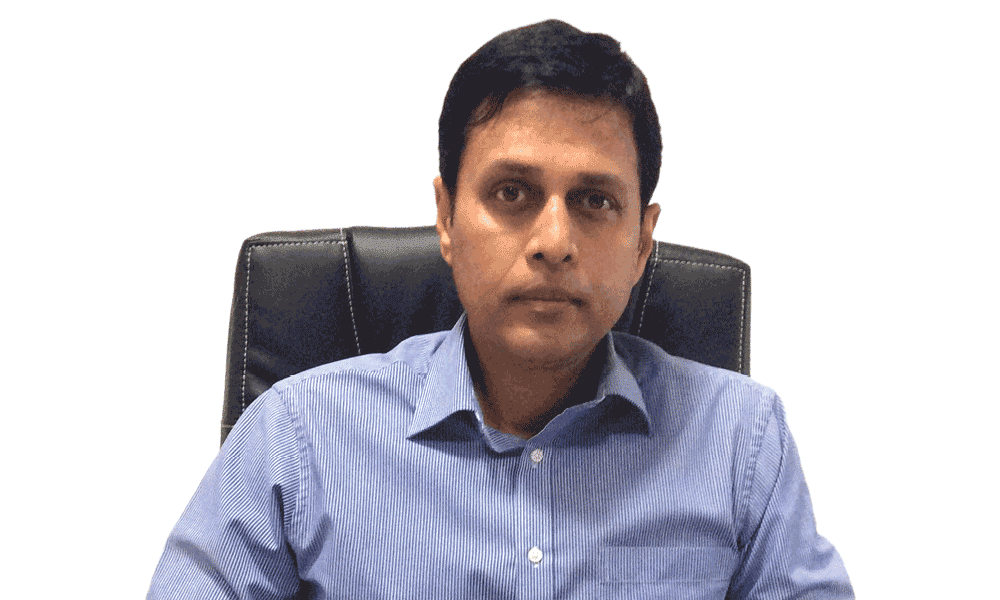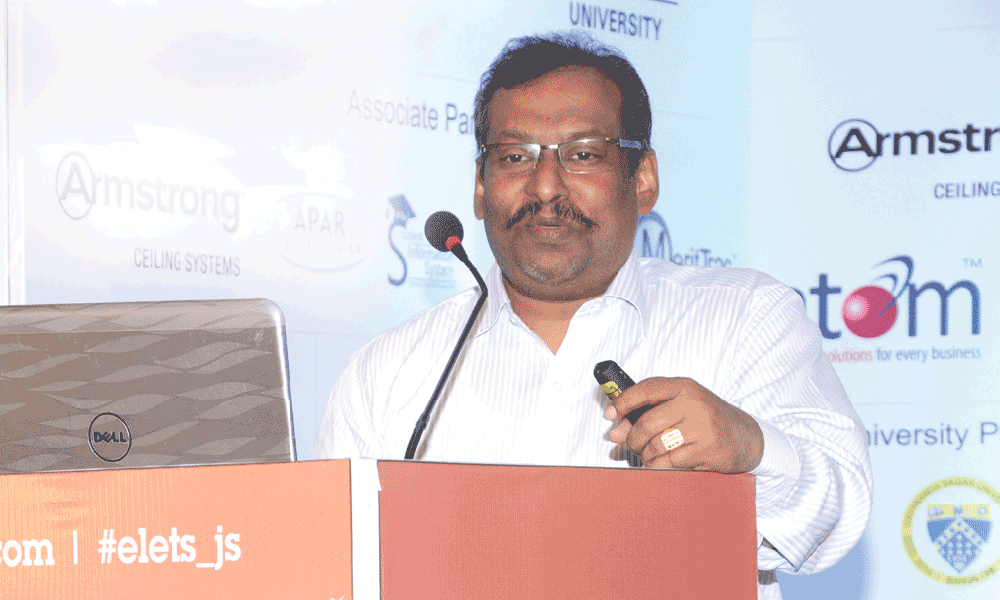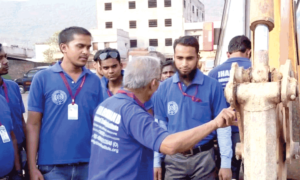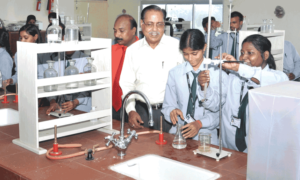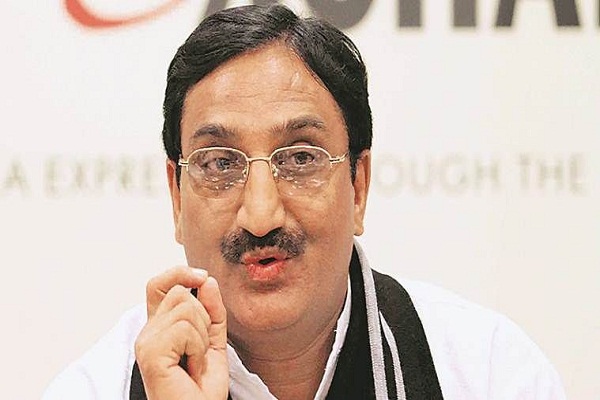Government of Jharkhand is very much committed to the cause of quality education for tribal children. The state has also developed textbooks for primary level other than textbooks for classes 1-2 in five tribal languages, says Aradhana Patnaik, Secretary, Department of School Education & Literacy, Government of Jharkhand, in a candid interview with Gautam Debroy of Elets News Networks (ENN).
Tell us about the school education scenario in Jharkhand.
The Department of School Education and Literacy, Government of Jharkhand, aims to provide education of equitable quality to all children to create an education system that provides access, equity and affordability while enabling every human being for a lifelong learning from early days of life.
Jharkhand has significantly improved its school education system since its inception, in terms of school access and enrolment of children. There are 40,174 government elementary schools, 2,637 secondary schools, and 522 higher secondary schools. Around 62 lakh students are enrolled in these schools. At the elementary level, the teacher-pupil ratio averages at 1:39. To improve the availability of teachers, 16,349 elementary teachers and 1719 secondary teachers have been recruited in 2015-16. We are in the process of recruiting nearly 18000 high school teachers this year.
Can you share some of the initiated programmes?
We have started certain innovative and dynamic programme interventions to improve quality of education. The statewide ‘Vidyalay Chalen Chalayen Abhiyan’ focuses on enrolment of all children in schools. Then through effective operationalisation of schools it attempts to ensure that all children attend schools regularly and learn continuously. For school operationalisation, we have certain dynamic activities such as Baal Samagam (all round student performance improvement), Kasturba Sangam (performance improvement of girls from vulnerable background), Baal Sansad (for student leadership and holistic development), Buniyad and Buniyad plus (for ensuring early grade learning skills of all children), Prayas (to enhance student attendance through integrated collaboration of students, teachers and community members), ‘Hamara vidyalaya Kaisa Ho’ (guidelines for school improvement), Pariwartan movement (active teachers and teacher educators support each other for school improvement), SESM (school education support mission for programme review and support in every district), etc. other than regular programme interventions under Sarva Shiksha Abhiyan, Rashtriya Madhyamik Shiksha Abhiyan, Mid-Day Meals Scheme, and teacher education.
Is school dropout in Jharkhand a major problem?
The dropout rate of children in schools has reduced over the years. As per our records (U-DISE), the dropout rate at elementary level is 5.1% in the state compared to 4.1% at the national-level. It was around 10% in 2010-11. We are trying to reduce dropout by focusing on quality education and thereby regular attendance of students and teachers.
What steps have been taken in this regard?
We have designed specific programmes to address the issue of dropout in the system. “Prayas” initiative aims in an integrated manner to bring back all children to school who remain absent for more than 3 days. We have a dedicated portfolio in the Baal Sansad (child cabinet) as Ministry for Attendance who continuously strive in partnership with their concerned teachers and SMC members to get each absentee child back to school. We also have initiated an SMSbased attendance monitoring system for teachers and students in all districts. We are also working on strategies to improve quality of school education so that children like to come to schools regularly and take part in various learning activities. We are also in the process of enrolling all children under Aadhar to reduce duplicacy in children’s enrolment.
Also there are issues related to children’s home languages which are different from school language which causes learning disadvantages. Hence we are going to initiate a mother tongue based multilingual education system in multilingual areas to enable children learn smoothly.
What is the status of SSA mission in Jharkhand?
Over the years, Sarva Shiksha Abhiyan (SSA) has significantly contributed in improvement of infrastructure in schools. Our focus is on providing quality education and improving learning levels of every child. We have initiated various activities for improvement in quality education in schools. Some of our major initiatives include Khel Khel Mein – children’s school readiness programme in early parts of class 1, Buniyad and Buniyad Plus – an integrated approach to strengthen early grade reading skills of children in primary classes, early grade mathematics in primary classes, reading programme in blocks with worst educational indicators, CCE – Continuous and Comprehensive Evaluation process for assessing and enhancing learning outcomes of students, special saturday classes focussing on personality development and moral values. JCERT has developed text books for classes 1-5 in 2015-16 and for 6-8 in 2016-17.
The State has also undertaken several measures to reduce drop out and to improve quality of education by providing free textbooks, school kits, uniforms and mid-day meals. To promote girls’ education, state is providing free tabs, gym for physical development and Wi-Fi in all Kasturba Gandhi BalikaVidyalayas (KGBVs) of the state. Science centres have been developed in KGBVs and some schools in several districts. We are also promoting the Aavishkar programme in secondary schools to promote interest of students in science along with their innovations.
“Baal Samagam” is organised annually to promote leadership qualities, inculcate team spirit, discover hidden talent and enable children of government schools to participate in a wide range of scholastic and co-scholastic learning activities from their schools to block, district and state level. In a similar way “Kasturba Sangam” is organised for girls from Kasturba Gandhi BalikaVidyalayas. We are going to initiate Shikshak Samagam for all government school teachers to motivate and enhance their skills.
Any special measures to attract the poor tribals into the education fold?
Our state is very much committed to the cause of quality education for tribal children. Recently, the state has developed textbooks for primary level other than textbooks for classes 1-2 in 5 tribal (Santhali, Ho, Mundari, Kurukh and Kharia) languages.
Out of these, textbooks have also been developed in Olchiki (Santhali) and WarangChiti (Ho) also. Using these, we are in the process of initiating a mother tongue based multilingual education programme in the state. This will enable the tribal children to learn in their mother tongue in the initial years so that they acquire basic language learning skills. Gradually they will be guided in a phased manner to bridge with Hindi and English in pedagogically appropriate ways so that they never face any language disadvantages. For this we have identified specific schools in different districts in multilingual pockets.
The state government has established 57 Jharkhand Balika Awasiya Vidyalayas for girls in remote blocks of the state and five residential schools for dropout children. Seven more residential schools are to be opened this year. The state has started Mukhyamantri Vidyalakshmi Yojana for SC/ST girls of Class 6 to address the problem of drop out amongst these girls. The state has also initiated Aakansha Coaching and Career Counselling programme for senior secondary students with focus on SC/ST students. The state government is also focussing on vocational education and skill development of high school children.
We believe strongly in the use of ICT in school education. We are in the process of providing electricity to all schools in the state by 2017-18. We have promoted certain innovative approaches for improving attendance and quality of education in schools by using ICT
Are you getting any benefit from the use of ICT in education sector?
We believe strongly in the use of ICT in school education. We are in the process of providing electricity to all schools in the state by 2017-18. We have promoted certain innovative approaches for improving attendance and quality of education in schools by using ICT.
We have set up SMART classes in all KGBVs and certain high schools. Tablets and WiFi connectivity is being provided to all the KGBVs. We would soon be implementing ICT based learning in over 1,000 high schools and computer-aided learning in nearly 500 middle schools of the state. We have also introduced E- Shiksha (e-learning classes through satellite based video conferencing) in some of the high schools. Our SMS-based approach of monitoring attendance and mid-day meals (e-madhyan) is doing well. We are using biometric system in all high schools to track teachers attendance. We are also in the process of developing a school based MIS system for tracking learning level of each child in the state.
What are the offers for private investors in school education in Jharkhand?
Our state is inviting private investors in school education with focus on support for quality improvement. We are striving to make Jharkhand an education hub. Our honourable Chief Minister is continuously organising road shows in different states and outside to invite private partners to invest in Jharkhand. This is a very positive sign for the state. We have a good number of development partners and private partners who are supporting us to improve quality of early grade reading, early grade mathematics, multilingual education, computer-aided learning, learning assessment, attendance enhancement, etc.
We will continue to invite private investors to come up with innovative and contextual solutions for Jharkhand so that our children, especially children in rural areas and vulnerable situations benefit in learning on a continuous mode.n












